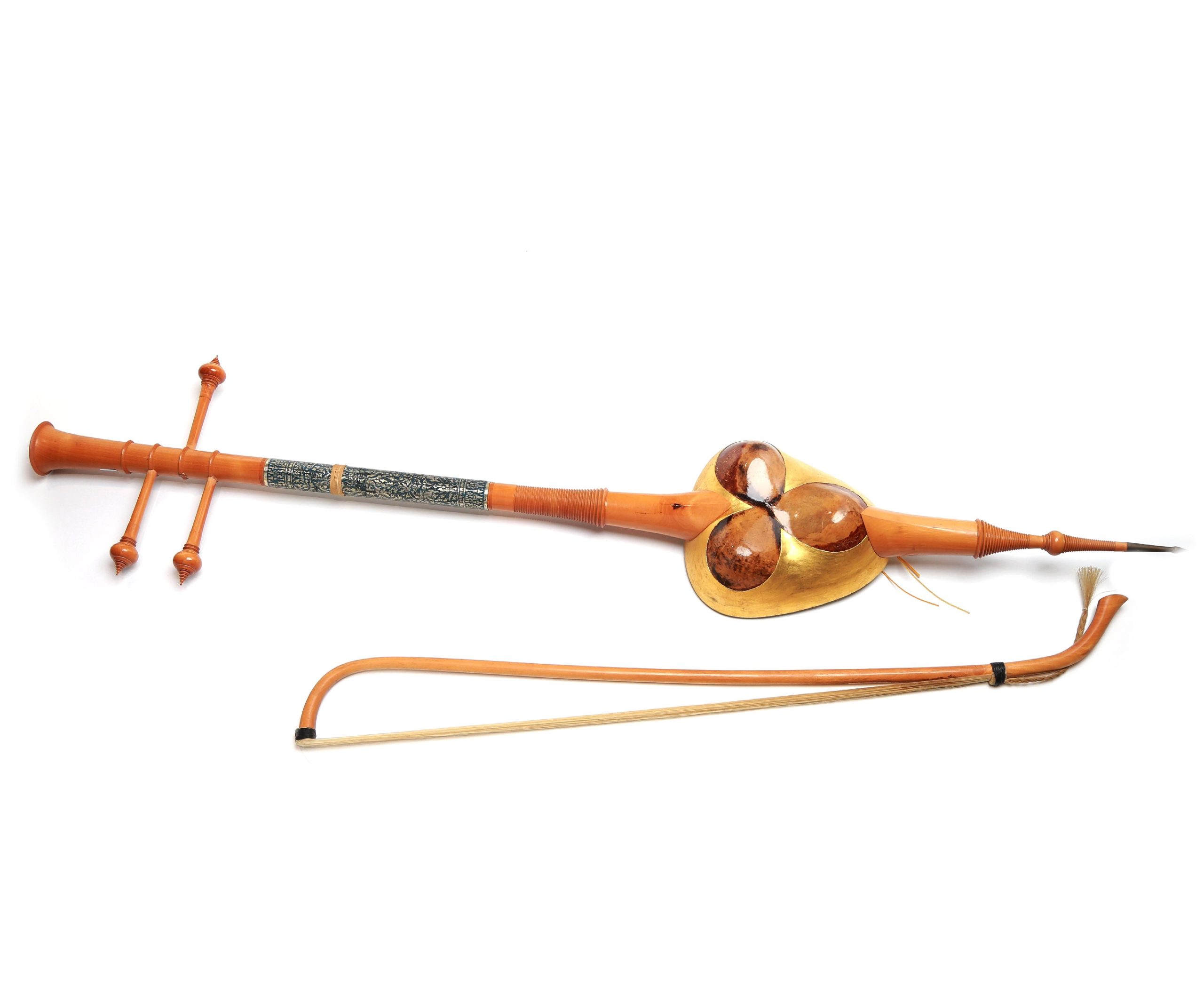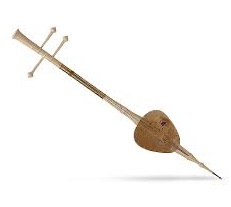Saw sam sai
Bowed Instruments
Asia
Between 1001 and 1900 AD
Video
The Saw Sam Sai is a traditional stringed instrument from Southeast Asia, specifically associated with the Khmer culture of Cambodia. It is a type of bowed lute, similar to the Sarinda in its shape and playing technique, but distinct in its design and sound. The Saw Sam Sai is often used in traditional Cambodian music, particularly in classical and court music, as well as in folk performances.
Description and Construction
The Saw Sam Sai, pronounced as “sɔː sǎːm sǎːj” in Thai, is a traditional bowed string instrument from Thailand, recognized for its unique three-string design. This instrument belongs to the family of Thai fiddles, which also includes the Saw U and Saw Duang. Unlike its counterparts, the Saw Sam Sai features three strings and a separate bow, allowing for a distinct playing technique and sound production. The construction of the Saw Sam Sai is intricate and relies on specific materials. Its body is crafted from a three-lobed coconut shell, which is covered on one end with animal skin to enhance its acoustic properties. The neck of the instrument is typically made from hardwood or ivory, polished to a smooth finish with wood varnish. The bow is composed of horsetail and hardwood, contributing to the instrument’s rich sound. Additionally, players often glue a jewel onto the skin before playing to minimize resonance interference, further showcasing the instrument’s cultural significance and aesthetic appeal.
History and Cultural Significance
The origins of the Saw Sam Sai can be traced back to the Sukhothai period in Thailand, which dates back to the 13th century. It is believed that this instrument may have been influenced by similar bowed string instruments from Persia, Cambodia, or Indonesia. Historical accounts suggest that it was used in royal ceremonies and traditional ensembles known as “mahori,” which combined vocalists with instrumentalists. During the Ayutthaya period (1351-1767), the Saw Sam Sai gained immense popularity among Thai nobility. It was during King Rama II’s reign that the instrument was elevated in status and became synonymous with royal music. The king’s passion for the Saw Sam Sai led to its incorporation into various ceremonial contexts, solidifying its place in Thai cultural heritage. The Saw Sam Sai is not only an instrument but also a symbol of Thai identity. It plays a crucial role in traditional music performances, often accompanying dances and theatrical presentations. Its melodies evoke emotions and tell stories, connecting listeners to their cultural roots.
Functionality and Types
The Saw Sam Sai operates through a bowing technique that produces a low-pitched vibrating sound. Players use a combination of finger positioning and bowing speed to create different tones and dynamics. The three silk strings are typically tuned in perfect fifths or fourths, allowing for versatility in musical expression. There are variations of the Saw Sam Sai based on regional styles and performance contexts. While the standard version remains consistent in its three-string design, some adaptations may include different tuning systems or embellishments that reflect local musical traditions.
Key Features
Three Strings: Provides a rich tonal range.
Separate Bow: Allows for unique playing techniques.
Coconut Shell Body: Enhances acoustics.
Animal Skin Covering: Contributes to sound quality.
Cultural Symbol: Represents Thai heritage in music.
The instrument features a long neck, typically made of wood, with three strings (hence the name “Saw Sam Sai,” which translates to “three strings”). The strings are traditionally made from silk or nylon, and they are tuned in a specific manner to create a range of melodic possibilities. The body of the instrument is small and oval-shaped, typically carved from a single piece of wood, and has a membrane or skin covering to act as the resonator.
How to play?
To play the Saw Sam Sai, the musician uses a bow, which is drawn across the strings to produce sound. The technique requires a delicate touch, with the left hand pressing the strings on the fretless neck to adjust the pitch, while the right hand moves the bow. The Saw Sam Sai is known for its rich, warm tone and its ability to produce both melancholic and joyous sounds, making it an important instrument in Cambodian music, especially in court performances and ceremonial settings. The music composed for the Saw Sam Sai often follows traditional Cambodian modes and scales, with improvisation being a key feature. The instrument plays an essential role in ensemble performances, blending with other instruments like the Roneat Ek (bamboo xylophone) and the Khmer drums, creating a distinct and rich texture.
Music Composition
The music composed for the Saw Sam Sai often features traditional Thai melodies that are characterized by intricate rhythms and expressive phrases. It is commonly used in folk music ensembles as well as classical performances. The instrument’s sound complements various genres, including traditional dance music, religious ceremonies, and royal celebrations. In modern contexts, composers have begun to explore innovative ways to integrate the Saw Sam Sai into contemporary music genres, showcasing its adaptability while preserving its traditional essence.
Cultural Significance
The Saw Sam Sai holds significant cultural value in Thailand. It is not merely an instrument but a vessel for storytelling and emotional expression. Its presence in festivals, rituals, and celebrations highlights its importance in communal life. Furthermore, efforts to preserve and promote this instrument reflect a broader commitment to safeguarding Thailand’s musical heritage for future generations. As globalization continues to influence music worldwide, the Saw Sam Sai stands as a testament to Thailand’s rich cultural history and artistic expression.
FAQ
What is the composition of the Saw Sam Sai?
The Saw Sam Sai is a traditional Thai bowed string instrument made up of three strings. It consists of a long neck and a body resembling a small barrel, typically made from wood. The strings are traditionally crafted from silk or nylon, and it has a small, circular hole in the body. The instrument is played with a bow, which is also strung with horsehair, and it often accompanies traditional Thai performances.
What materials are used to make the Saw Sam Sai?
The Saw Sam Sai is predominantly made of wood, with the body often crafted from hardwood like teak or rosewood. The three strings are traditionally made of silk, but modern versions often use nylon. The bow is made of bamboo, and the hair used for the bowstring is typically sourced from horsehair. This combination of materials gives the instrument its unique tonal qualities suitable for Thai classical music.
What is the history of the Saw Sam Sai instrument in Thailand?
The Saw Sam Sai dates back over a century in Thailand, believed to have been introduced during the Ayutthaya period. Originally used in royal courts and temples, the instrument was a significant part of Thai classical ensembles, particularly in the Piphat and Mahori orchestras. Over time, the Saw Sam Sai has evolved in design but remains central to the preservation of Thai traditional music and cultural identity.
 Links
Links
References
Other Instrument
Categories



















